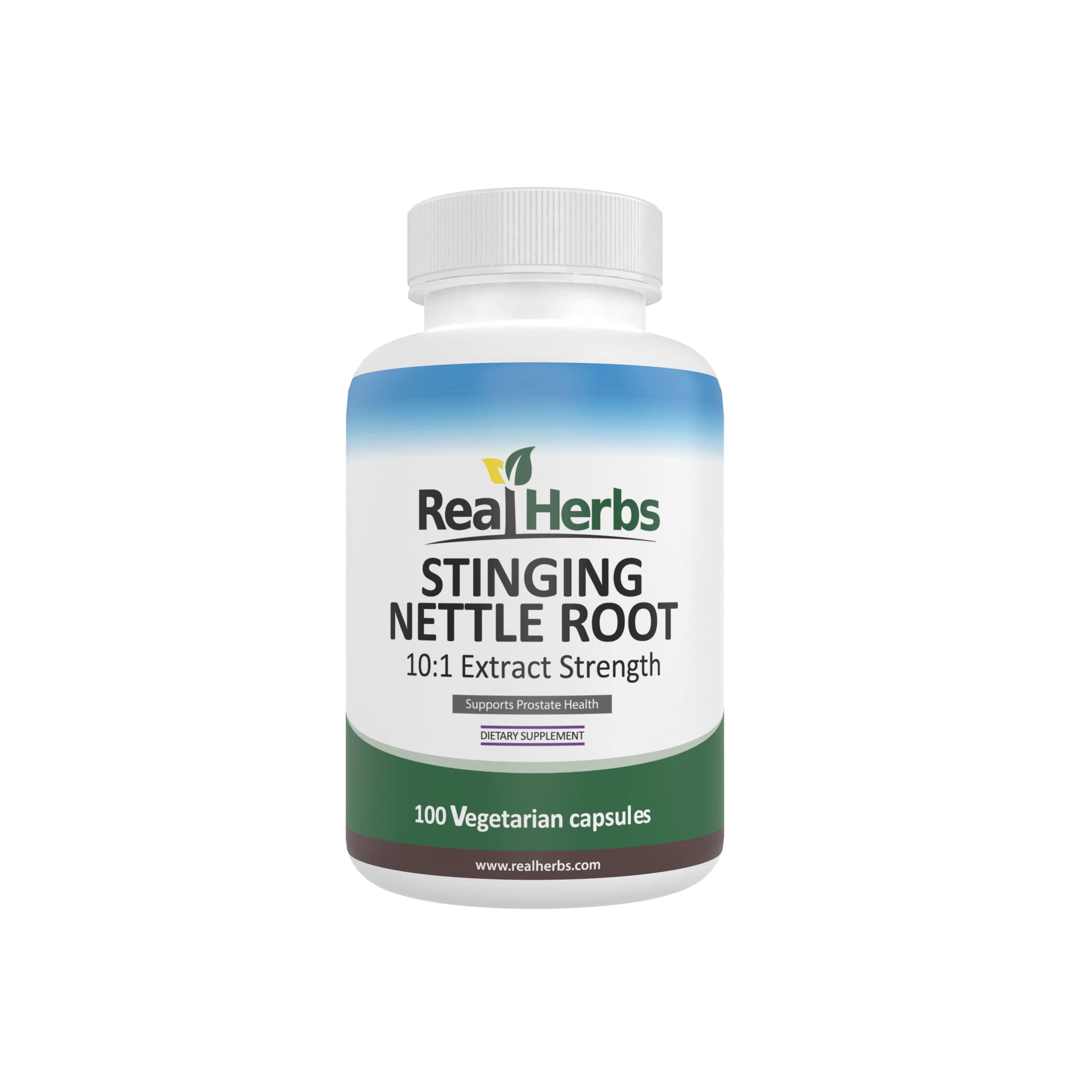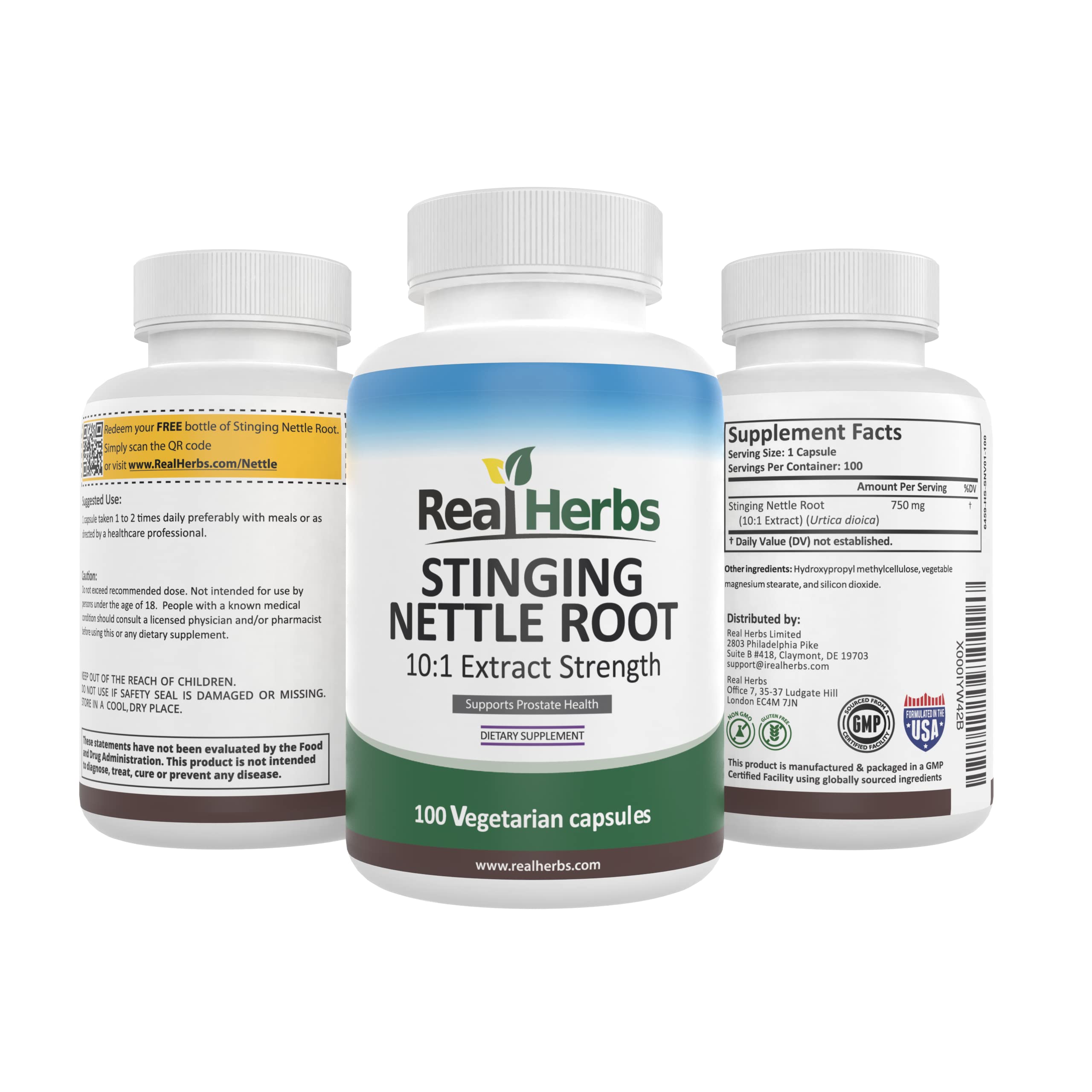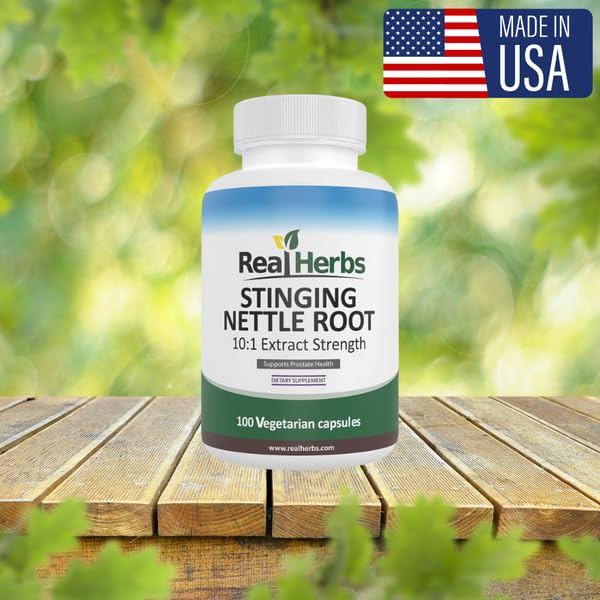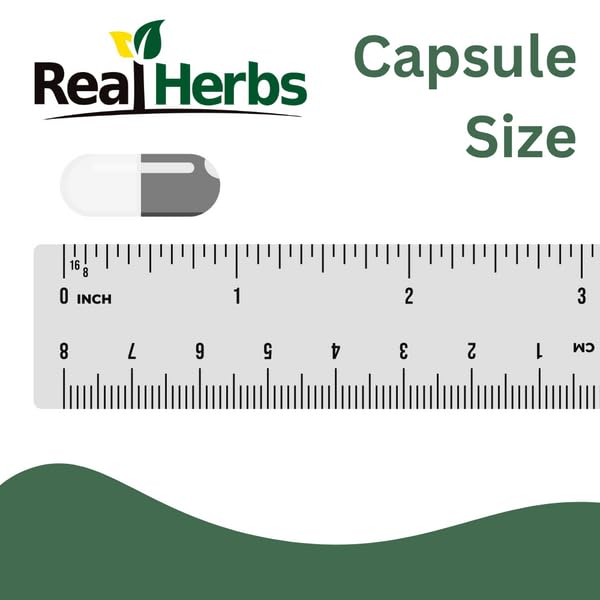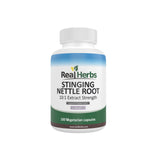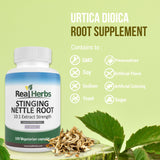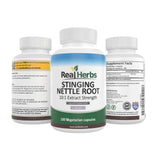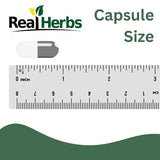Stinging Nettle Root for Allergies: Natural Antihistamine Backed by Science
Stinging Nettle Root for Allergies: Natural Antihistamine Backed by Science
Understanding the anti-inflammatory power that provides relief from hay fever and allergic rhinitis.
The Allergic Response and the Need for Natural Relief
Seasonal allergies, often called hay fever or allergic rhinitis, occur when the immune system overreacts to harmless substances like pollen. This overreaction involves the release of histamine and other inflammatory compounds from mast cells, leading to classic symptoms like sneezing, runny nose, congestion, and itchy eyes [1, 5].
While commonly recognized for prostate health, the stinging nettle plant (*Urtica dioica*), particularly its extracts, contains potent compounds that interfere with this allergic cascade. This guide explores the scientific evidence showing why stinging nettle root —and the whole plant extract often used in allergy clinical trials—is a powerful and effective natural antihistamine [1, 2, 5].

1. The Mechanisms: Nettle as a Multi-Target Antiallergic Agent
Unlike conventional antihistamines that primarily target a single receptor, nettle extracts employ multiple mechanisms to disrupt the allergic and inflammatory processes [1, 4].
Mechanism A: Histamine Receptor Modulation
The most direct evidence for nettle’s antiallergic action involves its interaction with histamine receptors. In vitro studies demonstrate that nettle extracts exhibit antagonist and negative agonist activity against the Histamine-1 (H1) receptor [1]. This means the nettle compounds can:
- Block Receptor Sites: Compete with and block histamine from binding to the H1 receptor, preventing symptoms like itching and vasodilation.
- Dampen Receptor Activity: Reduce the overall activity of the receptor, even if some histamine is present.
Mechanism B: Mast Cell Stabilization
Allergies begin when mast cells release a flood of inflammatory mediators. Nettle extracts have been shown to inhibit mast cell tryptase [1]. Tryptase is an enzyme released during mast cell degranulation (the "explosion" that releases histamine). By preventing or reducing this release, nettle helps stabilize the mast cells, reducing the overall severity of the initial allergic reaction [1].
Mechanism C: Broad Anti-Inflammatory Action
Allergy symptoms are essentially inflammation in the nasal passages and sinuses. Nettle extracts intervene in broader inflammatory pathways by inhibiting key enzymes, including:
- Cyclooxygenase (COX) Enzymes: Nettle extracts inhibit COX-1 and COX-2, which are enzymes responsible for producing prostaglandins, central pro-inflammatory mediators [1].
- Lipoxygenase (LOX) Pathway: The compounds in *Urtica dioica* also modulate the Lipoxygenase pathway, further contributing to its anti-inflammatory effects and helping to soothe congestion and swelling [5, 6].
2. Clinical Evidence: Relief from Allergic Rhinitis
The efficacy of nettle in managing allergies is supported by clinical research, demonstrating its ability to provide measurable symptomatic relief [2, 3].
- Root Extract Success: A randomized, double-blind, placebo-controlled clinical trial specifically using stinging nettle root extract showed significant improvement in the clinical symptoms of allergic rhinitis and reduced nasal eosinophils (inflammatory markers) in patients over the placebo group [2]. This highlights the effectiveness of root-based extracts for allergy support.
- Freeze-Dried Herb Trials: Another double-blind study evaluating freeze-dried Urtica dioica (whole herb/leaf) extract noted that participants often found relief from symptoms, with many rating the preparation as better than placebo [3].
- Mechanistic Validation: The anti-allergic effects found in human trials are strongly supported by in vitro and preclinical studies that confirm nettle’s ability to act on the specific receptors and enzymes involved in the allergic response [1, 4].
3. Usage and Maximizing Results
For allergy relief, extracts derived from the aerial parts (leaf/stem) or the root are commonly used in standardized forms, as these ensure a consistent dose of the active phytochemicals (flavonoids and phenols) [5].
- Form and Dose: Look for standardized extracts in capsule form. Doses studied in clinical settings typically range from 150 mg to 500 mg, taken several times daily during the allergic period [2].
- Timing: For seasonal allergies, begin supplementation 4–6 weeks before the typical start of allergy season to allow the herb's compounds time to modulate the immune system effectively [5].
- Consistency: Continuous daily use throughout the allergy season is vital for maintaining the inhibitory effects on histamine and inflammatory enzymes.
Optimize Your Health Over 40 with Nettle Root
To maintain prostate health, energy, and hormonal balance, choose the Stinging Nettle Root extract backed by clinical research.
Our Solution: Real Herbs Stinging Nettle Root is formulated to deliver the specific lignans and phytosterols that modulate SHBG and combat prostate cell proliferation.
Invest in your long-term vitality today, protected by our 100-Day Money-Back Guarantee!
"The difference in nighttime bathroom trips has been remarkable since I started the nettle root. I finally get a full night's sleep." - Robert G.
"I noticed better energy and less joint stiffness after a few months. This is a staple in my regimen now." - Thomas A.
Disclaimer: The information provided in this article is for educational purposes only and is not intended as medical advice. Always consult with a qualified healthcare professional, especially if you have asthma, severe allergies, or are taking prescription medications.
Scientific Credibility & Citations
- Roschek B Jr, Fink RC, et al. Nettle extract (Urtica dioica) affects key receptors and enzymes associated with allergic rhinitis. *Phytother Res*. 2009. PMID: 19140159 (In vitro study, H1 receptor antagonism/Tryptase inhibition)
- Bakhshaee M, Mohammad Pour AH, et al. Efficacy of Supportive Therapy of Allergic Rhinitis by Stinging Nettle (Urtica dioica) Root Extract: a Randomized, Double-Blind, Placebo-Controlled, Clinical Trial. *Iran J Pharm Res*. 2017. PMID: 29844782 (RCT, Root Extract/Symptom Improvement)
- Mittman P. Randomized, double-blind study of freeze-dried Urtica dioica in the treatment of allergic rhinitis. *Planta Med*. 1990. PMID: 2192379 (RCT, Freeze-dried Whole Herb/Symptom relief)
- In vivo pharmacological testing of herbal drugs for anti-allergic (including Urtica dioica) effects. *J Immunotoxicol*. 2022. PMID: 35399803 (Animal study, anti-allergic effects)
- Chrubasik JE, Roufogalis BD, Wagner H, Chrubasik S. A comprehensive review on the stinging nettle effect and efficacy profiles. Part II: urticae radix. *Phytomedicine*. 2007. PMID: 17509841 (Review, Anti-inflammatory context)
- Bhusal KK, Magar SK, et al. Nutritional and pharmacological importance of stinging nettle (Urtica dioica L.): A review. *Heliyon*. 2022. PMID: 35800714 (Review, broad medicinal uses)
- Mechanisms underlying the antihypertensive properties of Urtica dioica. *J Transl Med*. 2016. PMID: 27585814 (Review, broad pharmacology context)

